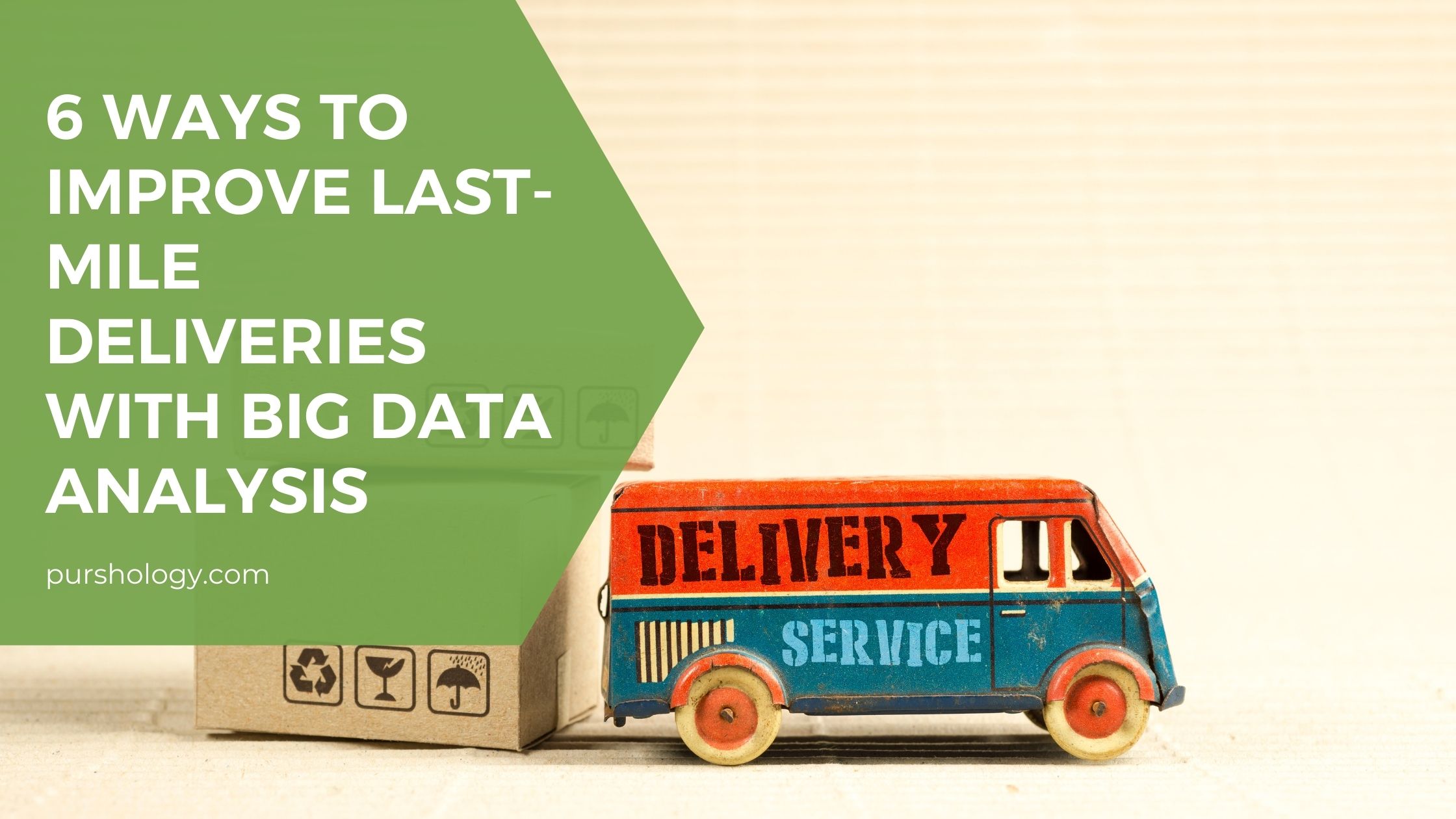In this article, you will learn:
- Problems related to last-mile logistics.
- Know what big data analysis means for organizations.
- Ways to boost last-mile deliveries using big data analysis.
- Find out why companies should invest in technologies for proper collating of big data and information.
More and more customers are opting to shop online for their daily needs instead of only purchasing items for special occasions. That is why a smooth and streamlined last-mile delivery process is a must. Since last-mile delivery is the most expensive part of the supply chain, it is necessary to ensure those costs don’t spiral out of control.
What is the problem with last-mile logistics?
Customers want the logistics company to tick all boxes of their expectations. While shopping online, they want the best of options when it comes to deliveries. For instance, Amazon Prime offers two-day, same-day, and even same-hour deliveries, depending on your location. The present problem with last-mile deliveries is they are lagging efficiency-wise, especially in areas where distance is much longer between two destinations. These inefficiencies and high costs are leaving companies struggling to improve last-mile delivery, and many are turning to big data analysis to find their solutions.
What is big data analysis?
Big data analysis provides companies with the necessary insights required to develop qualitative and quantitative operations improvements, which brings contextual intelligence to the supply chain and improves last-mile deliveries. With enormous amounts of data being generated, technology can be used to translate that into practical business insights and apply it for optimizing logistics processes. Using this information, more personalized customer experiences can be created. Big data analysis can be further sub-divided:
Big Data
Information and statistics relevant to a business are gathered and processed as data captured in real-time, variable data dependant on factors like context, volume, and time, and higher volumes of the right information for smarter decision making.
Analysis
This part involves the use of mathematical and statistical models to give a purpose to the data – this is done to make operational decisions regarding business opportunities or other issues.
Big data is used to detect patterns and gain behavioral information, which is then used to make several processes within the company all the more efficient. Collected data points improve the overall process, track customer demographics, and even predict future industry trends. Logistics and supply chain companies generate humongous amounts of data from various operation channels. Be it trends in customer behavior, distribution, and supply performance, or last-mile KPIs – these “big data” can result in smooth operational processes, reduced expenses, and better results when it comes to customer experience.
Ways to improve last-mile operations using big data analysis
As per Amazon executive Brittan Lad, the last mile on average makes up almost 30% of the transportation costs. The real challenge is keeping these expenditures at a minimum. That is the reason an optimized last mile is imperative for eCommerce companies and supply chains. Big data offers the opportunity to change and improve internal processes, while granting better control over external factors, be it from the business or customer perspective.
More transparency
There are always areas of improvement in last-mile operations such as communication issues during delivery, failed deliveries, and other unexpected problems. Due to a lack of actionable data, these issues often slip under the radar and aren’t detected until it is too late. But big data can help pinpoint areas of weakness and those issues can be resolved in real-time.
Retaining customers and building loyalty
According to a survey by Capgemini and Oracle, 44% of business leaders have stated that maintaining customer satisfaction is one of the most crucial aspects of last-mile deliveries. The only way to understand what customers want is by analyzing historical data. Logistics managers should create a supply network and distribution operation that maximizes the perception of value from the client’s end. This part is all the more important when it comes to delivery experience because most dissatisfied customers won’t return to a brand that failed to meet expectations and requirements.
Segmentation and targeting
The last mile supply chain is dependant upon multi-channel strategies that are used to define and target each segment from their client base – it is high time that companies are aware of this fact! The creation of contextual information from customer behavior, both online and offline, is a key step in optimizing logistics efforts in the last mile delivery experience. Meticulous analysis of customer data and information makes it possible.
Optimizing costs and resources
Logistics and transportations companies depend on a plethora of external factors that directly affect cost structure, such as drastic changes in oil prices, bad weather, congestion on roads, insurance costs, damaged goods, etc. With big data at their fingertips, managers can use it to analyze the status of their delivery operations in real-time and make decisions based on available information.
Better process quality and performance
Proper planning and scheduling play a crucial role when it comes to last-mile deliveries, which impacts the customer experience too. Using big data analysis and real-time data collection, managers can plan in terms of demand and delivery efforts, while scheduling and optimizing transportation routes, improving the number of timely deliveries, and minimizing the cost of getting returned goods. These concerns can be addressed and resolved as they appear.
Boosting customer interactions
You need to engage with your customers and identify trends in their behavior – big data can help to accomplish this purpose. Customers should receive personalized information based on their preferences – that is how you can connect with them. With information regarding customer journeys and support questions, you can predict what a customer needs.
Why do you need big data analysis?
Mining the available data and information requires an investment in the right technology – this is essential for gaining clarity when it comes to last-mile operations. Managers can’t depend on insights from separate business data systems which deliver information a few days after received. This delay can lead to loss of credibility and revenue leakage. With the advent of cutting-edge technology, companies can leverage and combine structured, unstructured, and even semi-structured data, at a fast pace.
Unfortunately, several companies haven’t yet started to investigate the benefits of big data. Other organizations are facing issues on how to structure, develop and deploy the necessary capabilities such as real-time information, transparency across supply chains, and meeting customer expectations, required to create a well-functioning last-mile process. But big data analysis can be implemented via software and visualization tools that effectively manage data and transform it into dashboards and reports for easier interpretation. When you invest in the right technology, it creates sustainable operations over time, thus improving the last-mile delivery process.
About The Author
Neil is the Chief executive officer at Anstel Global, a SaaS-based IoT platform for connected logistics solutions that helps fleet management companies reach business objectives. He is passionate about IoT-based applications and has spent the last decade working with organizations to improve their ROI through connected logistics solutions.




